Today we are unpacking a brand new LCR meter from a company called Tonghui in China. It was purchased on ebay and took less than a week to arrive.

When inserted backwards, you could have reverse polarity voltage present on the terminals. Hopefully, the design can handle that
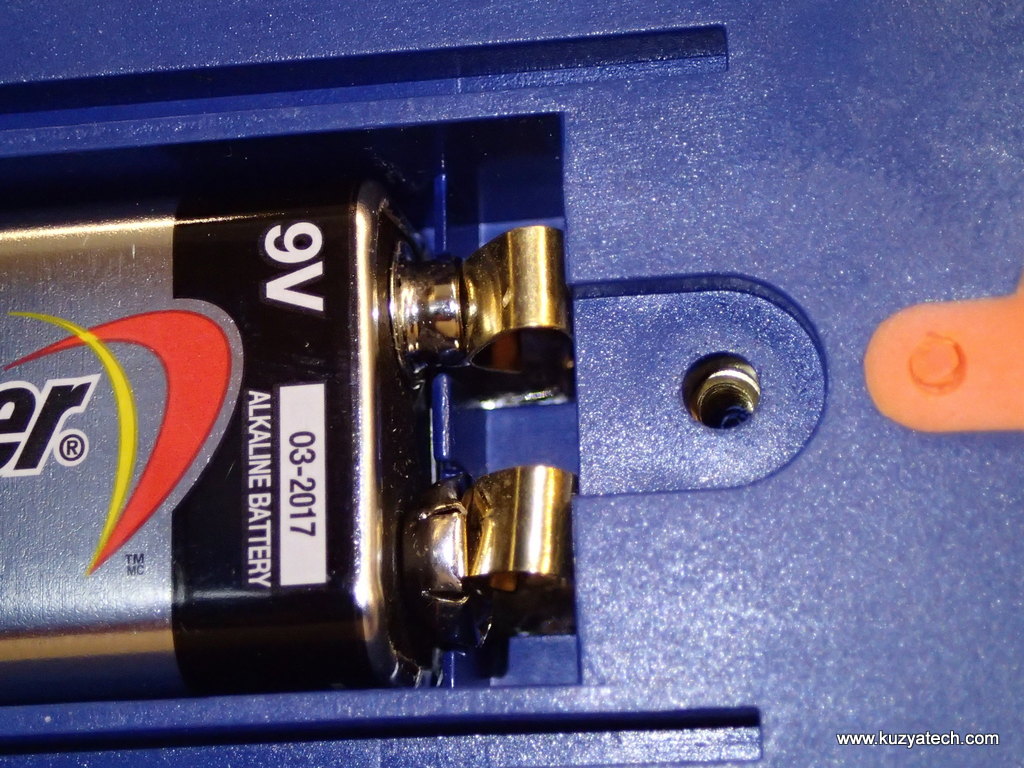
On the other hand, the plastic openings are keyed to only let the battery be fully installed the proper way
With the unit unpacked and battery in place, let’s power it up:
A few capacitance checks versus a reference Agilent U1252A DMM. They are not exactly fair, as we are using a 4 wire setup in TH2822A vs a two wire one with Agilent. The results also depend on test frequency and the test mode you are using- series or parallel. The manual has a selection table based on the value being measured, but I can’t claim to have it always been correct during these tests. First is 470uF Panasonic electrolytic cap. 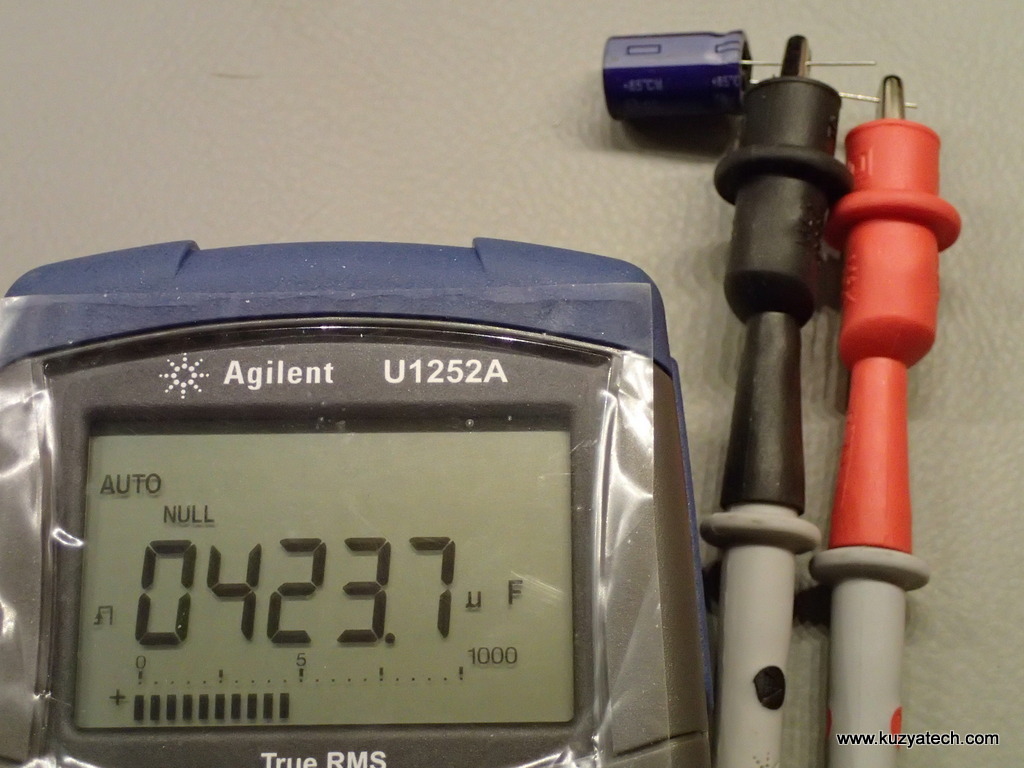
Next is a 1uF panasonic
And for something larger: 3200uF nominal cap from a PC power supply:
But watch what happens when we bump the test frequency- it goes negative?
And now on to ceramics:
On to resistance checks, using Voltagestandard’s DMM Check Plus that comes with four 0.1% precision resistors: 100k comparison
10k comparison
1k comparison
100 Ohm comparison
Inductor tests- I had no known value ones to measure and no other meter to compare to, so ommiting that functionality for now.
Utility menu. Util button, when pressed for a few seconds gives access to a utility menu with a lot of useful settings:
And now on to a quick peek inside:

Typical pragmatism- why bother with metal inserts on the case screws if they are not used as often as the battery cover one
The USB interface is a simple Virtual com port using Silicon Labs CP2102 chip, with drivers widely available. The interface protocol is SCPI compliant and nicely documented in the user manual.
With the exception of the added input protection board on this meter, the interior is suspiciously similar to a BK 879B from BK Precision.There is a lot of talk of Toghui company being an OEM for many other brands, possibly including BK over on the EEVBLOG forums. See this thread for more examples. The similarities in the hardware, firmware, menus, PC software and even case design are definitely pointing to the common ancestry between them in the humble opinion of this blogger.
Conclusion: I am pretty happy with the meter. It’s very easy to use, menus and manual are logical and the ranging is lightning quick. The assembly quality and components used are first rate. For about $100 less you get essentially a BK 879B unit minus stateside support and warranty, but with additional input protection and the four wire clip leads.
Related links:
- User manual (mirrored here)
- Datasheet (mirrored here)
- EEVblog episode#137 BK879B review

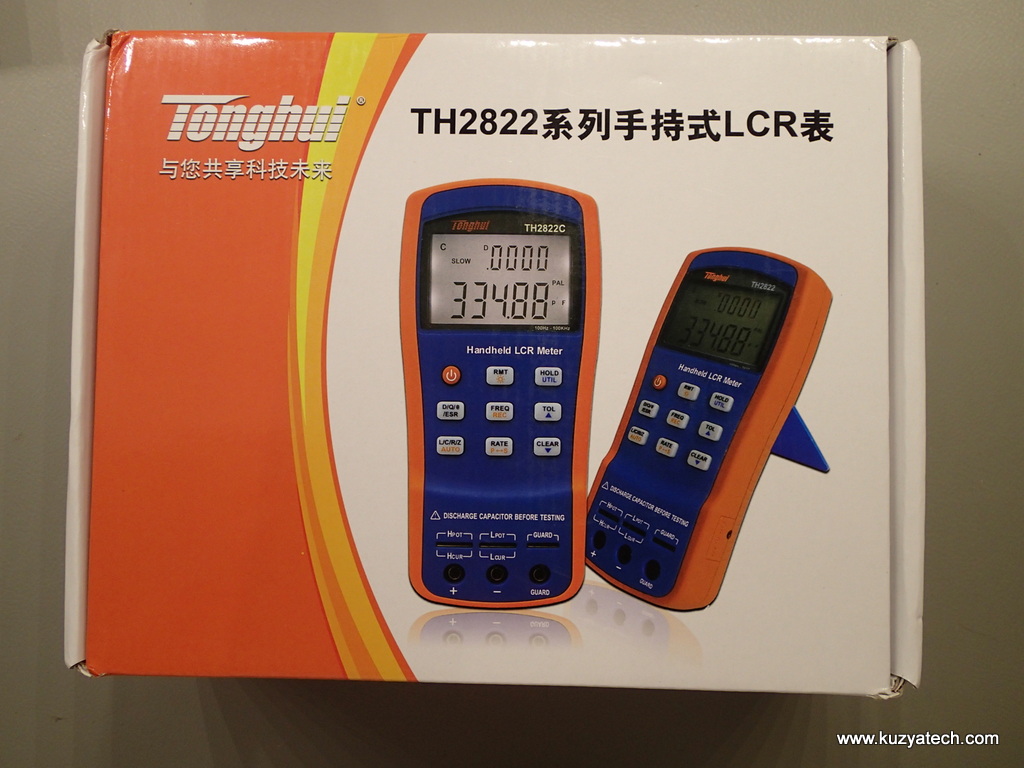


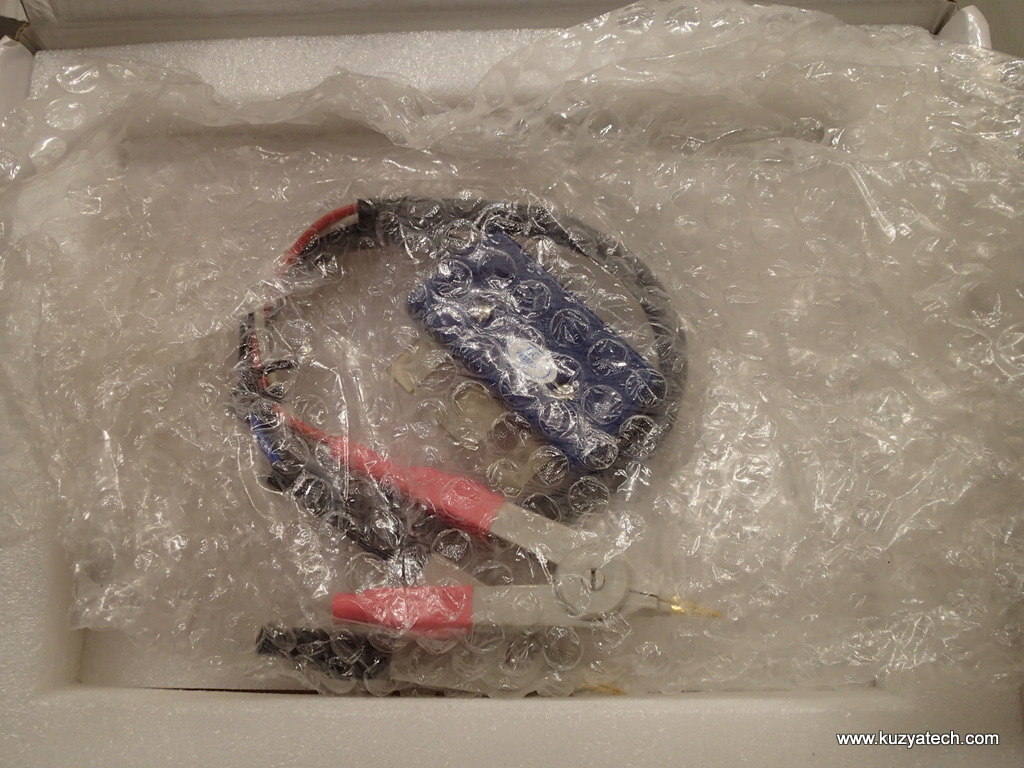
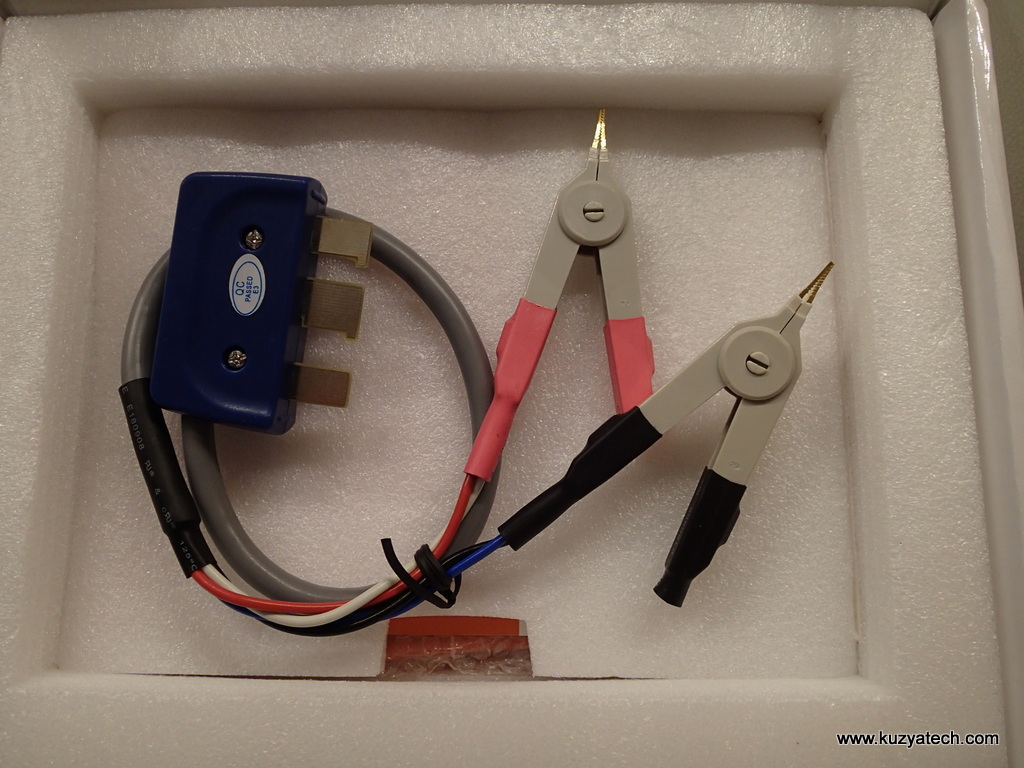
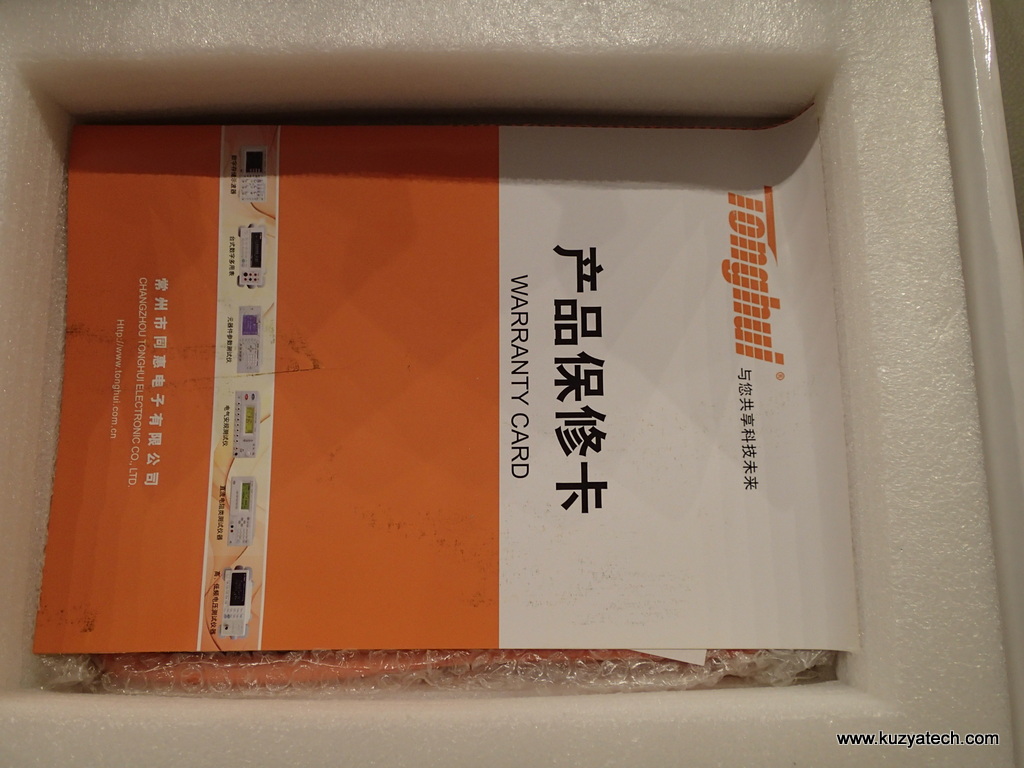
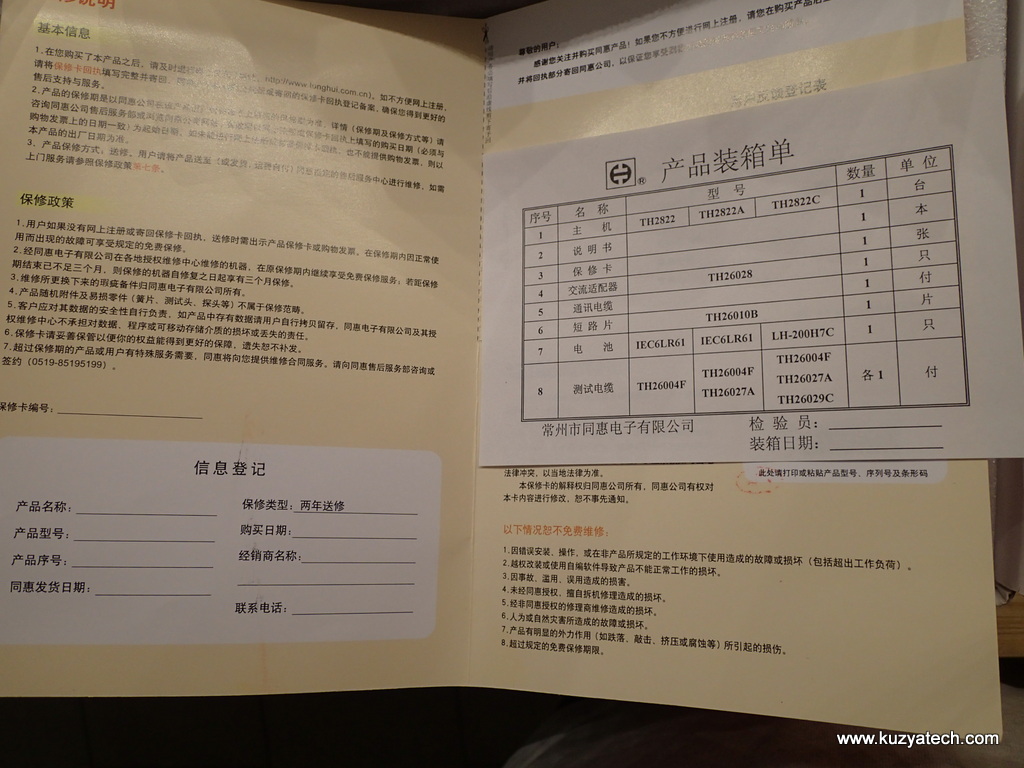
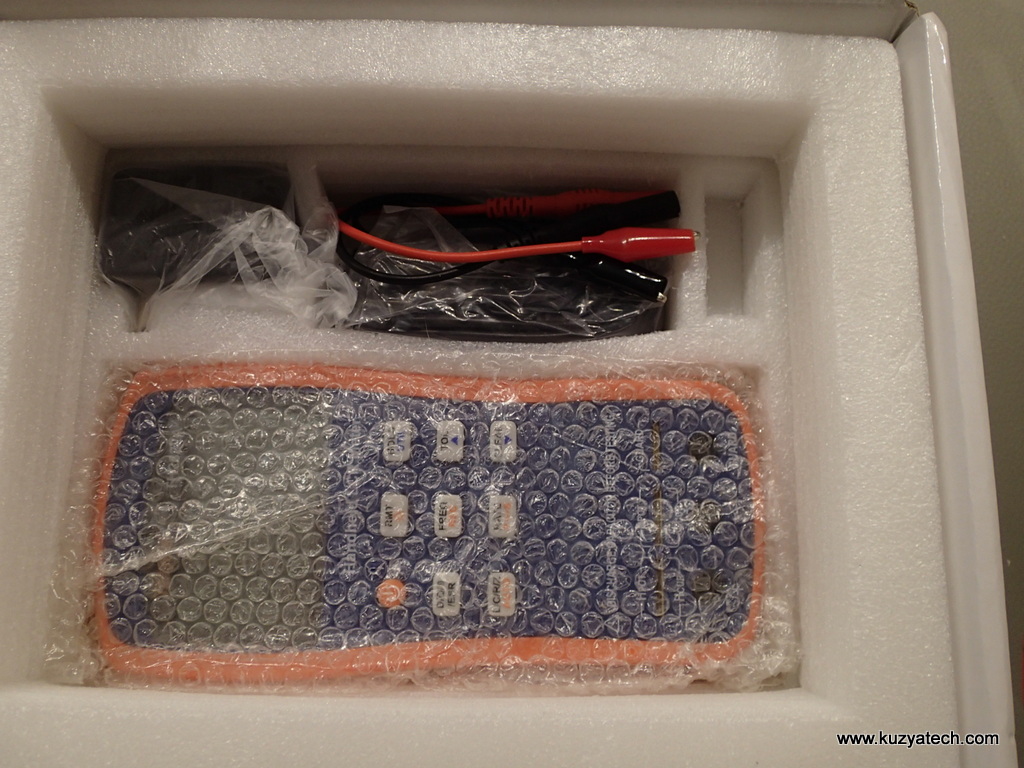

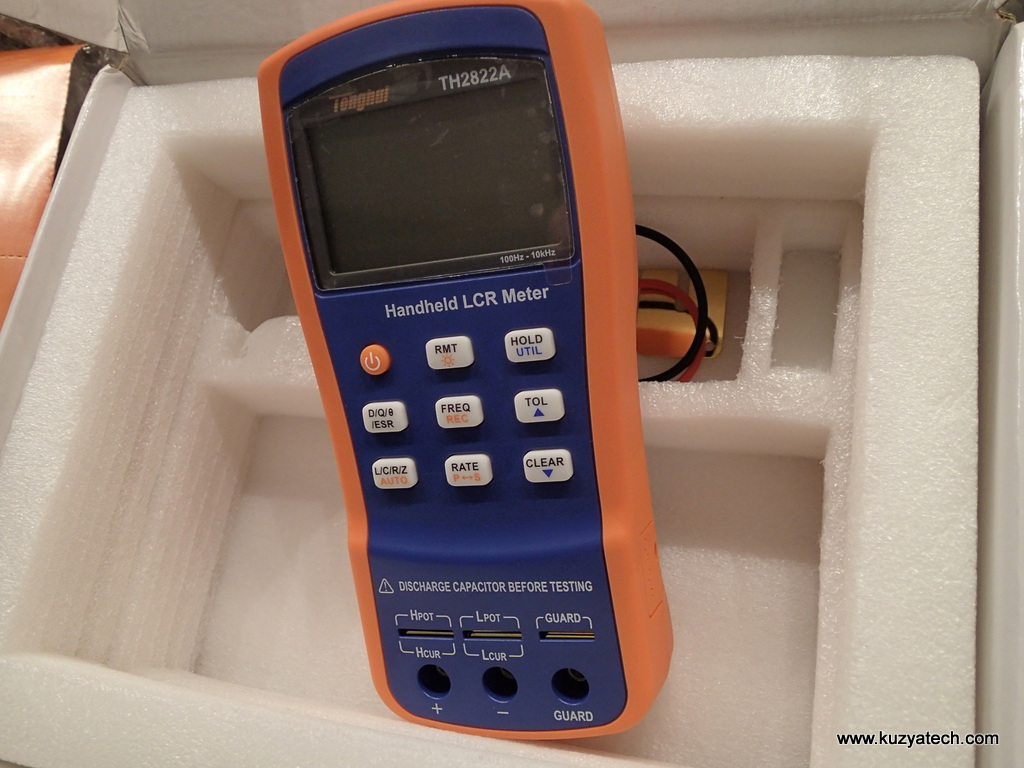
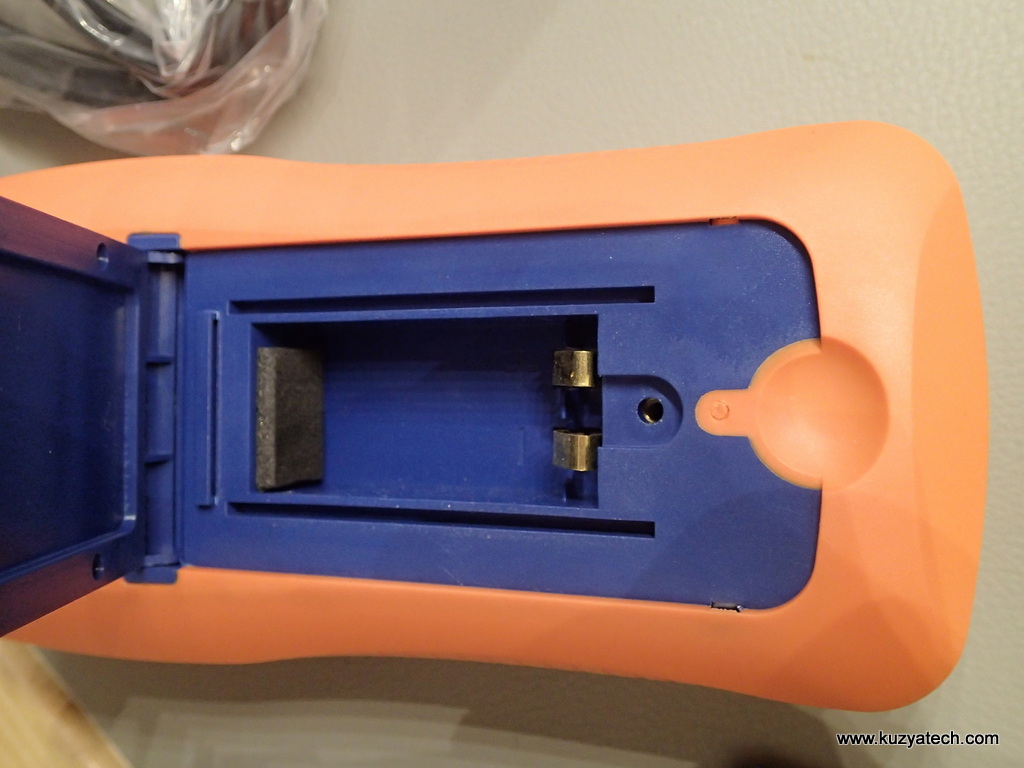

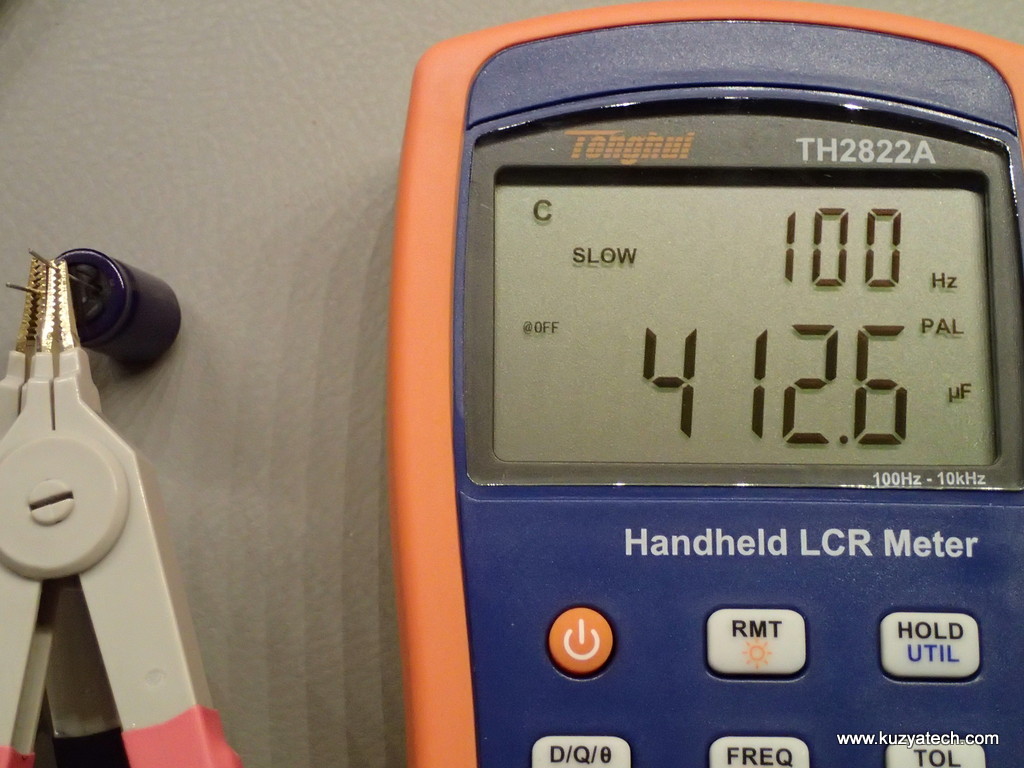
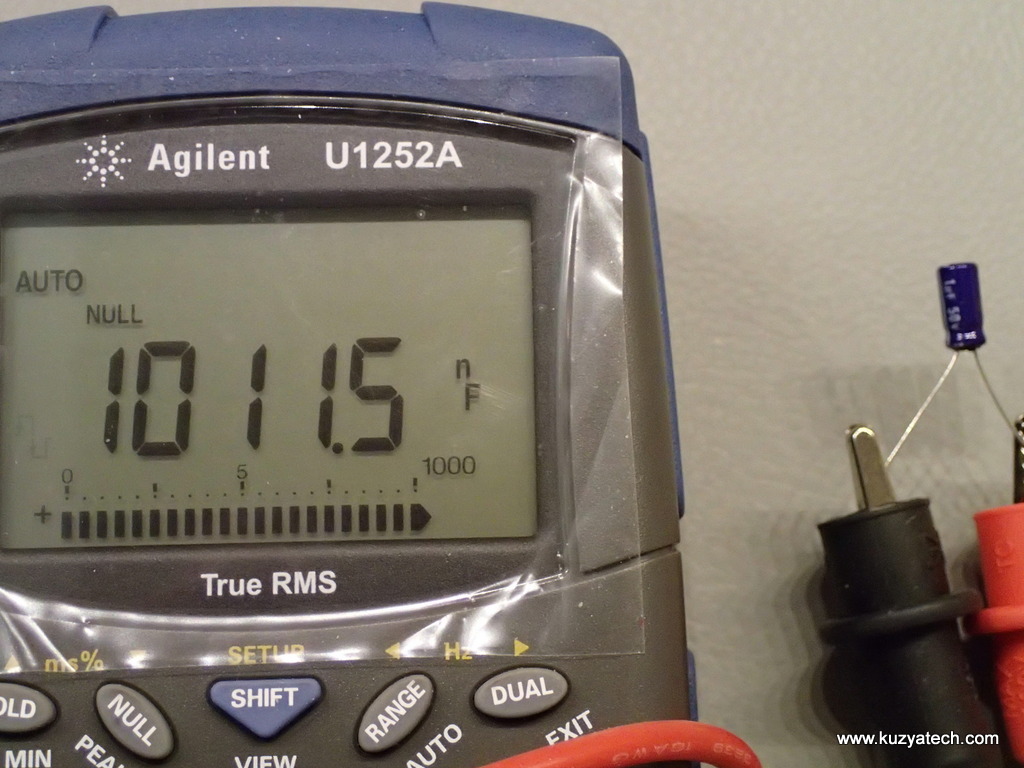
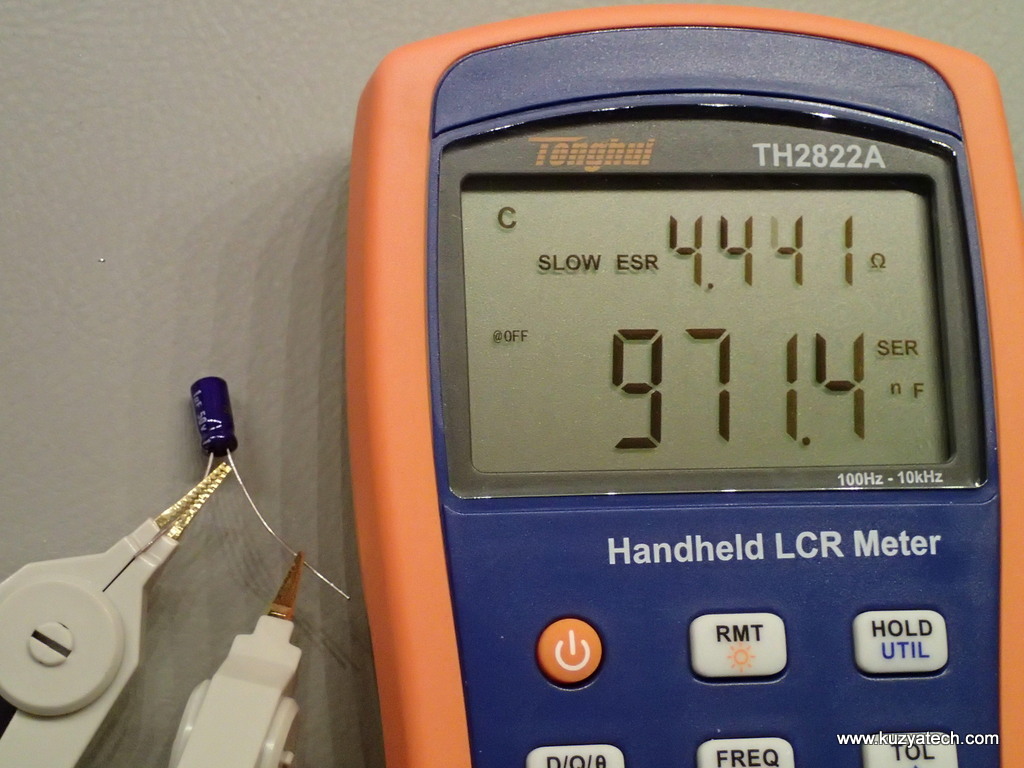
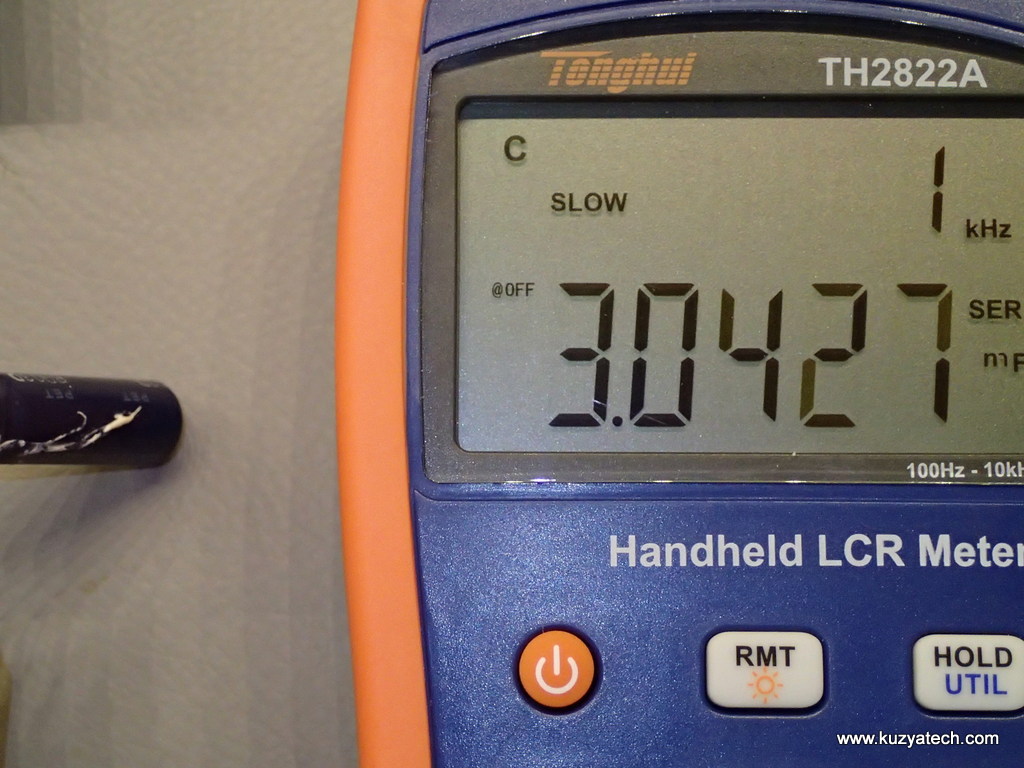

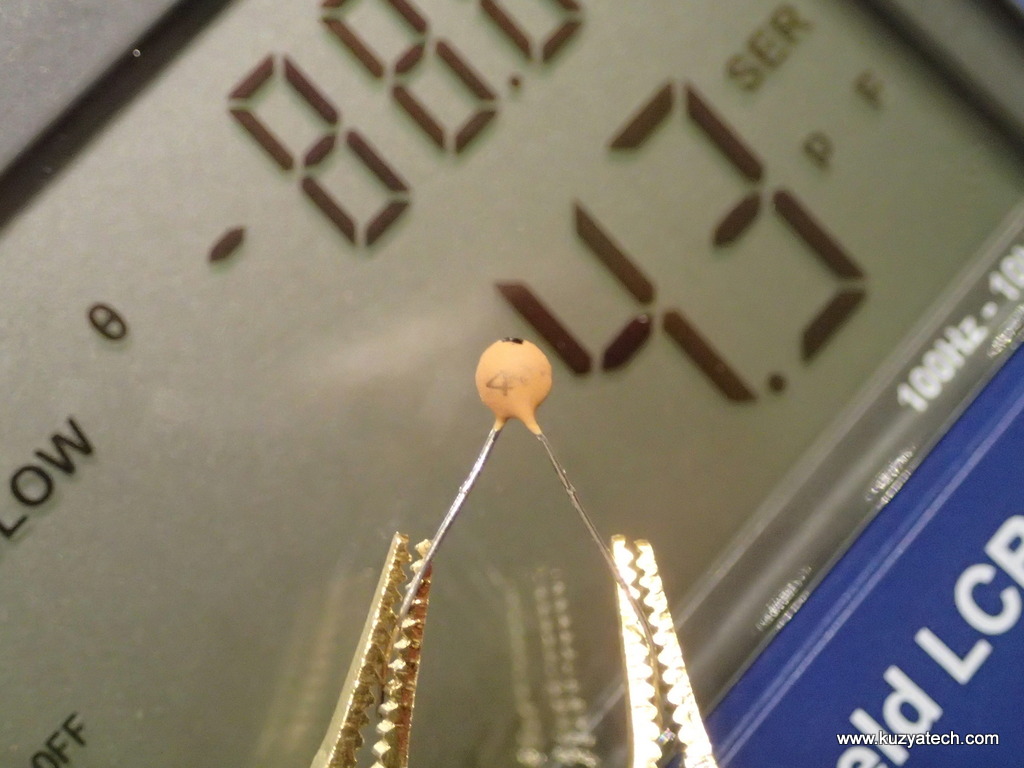


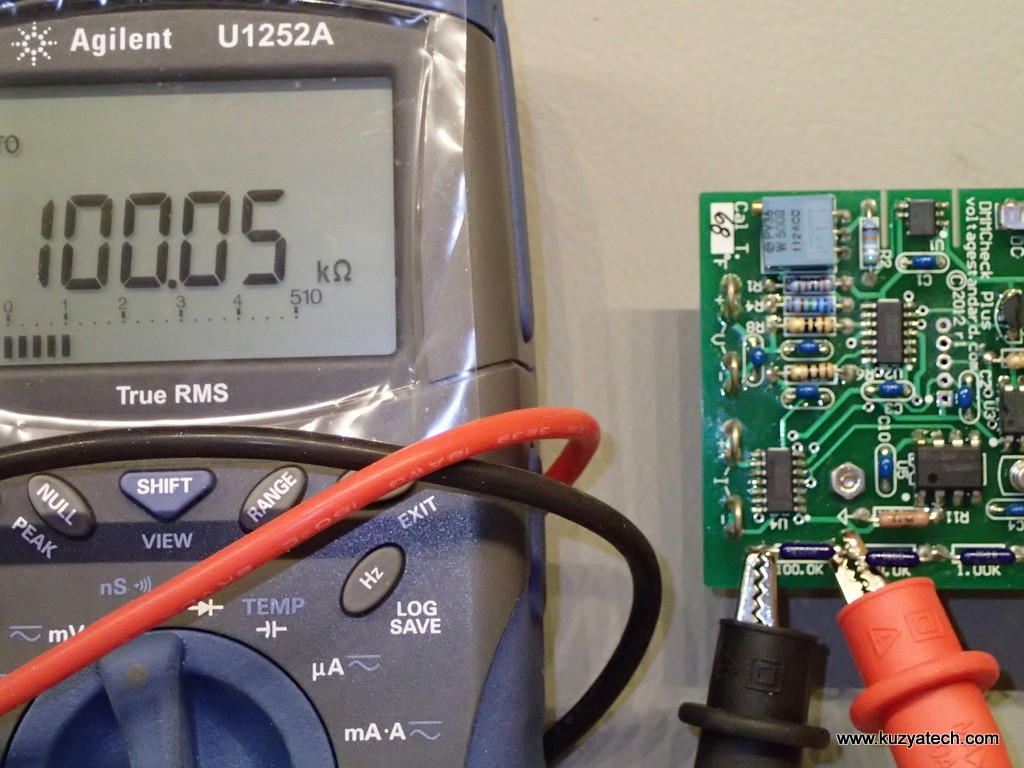

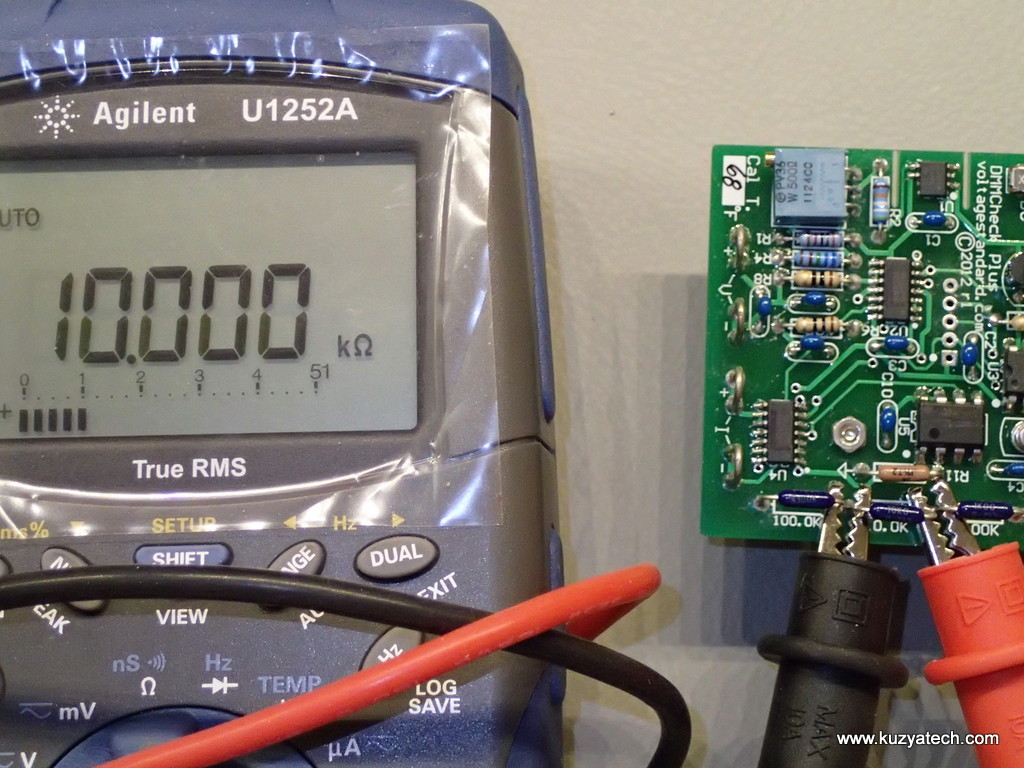

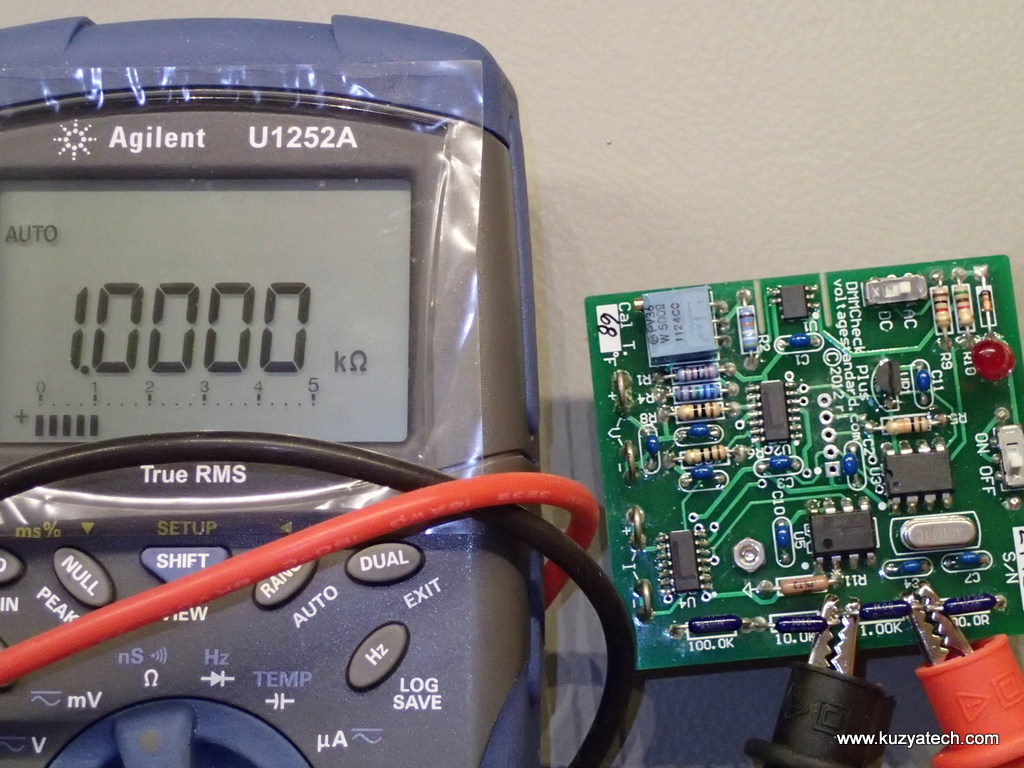
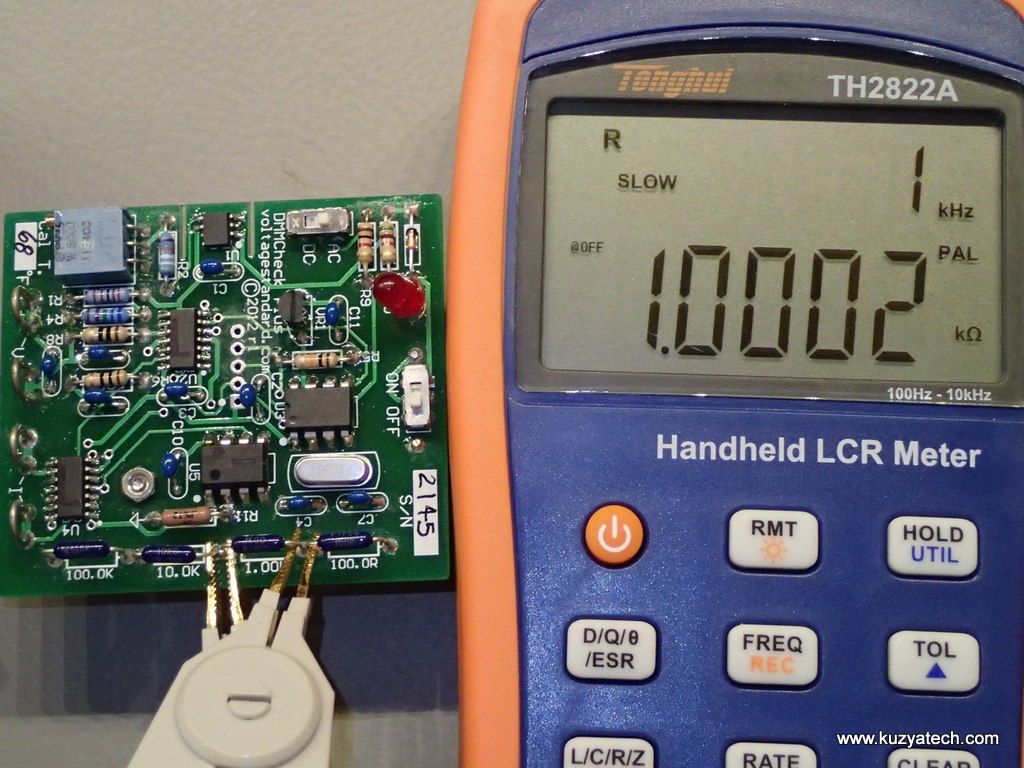
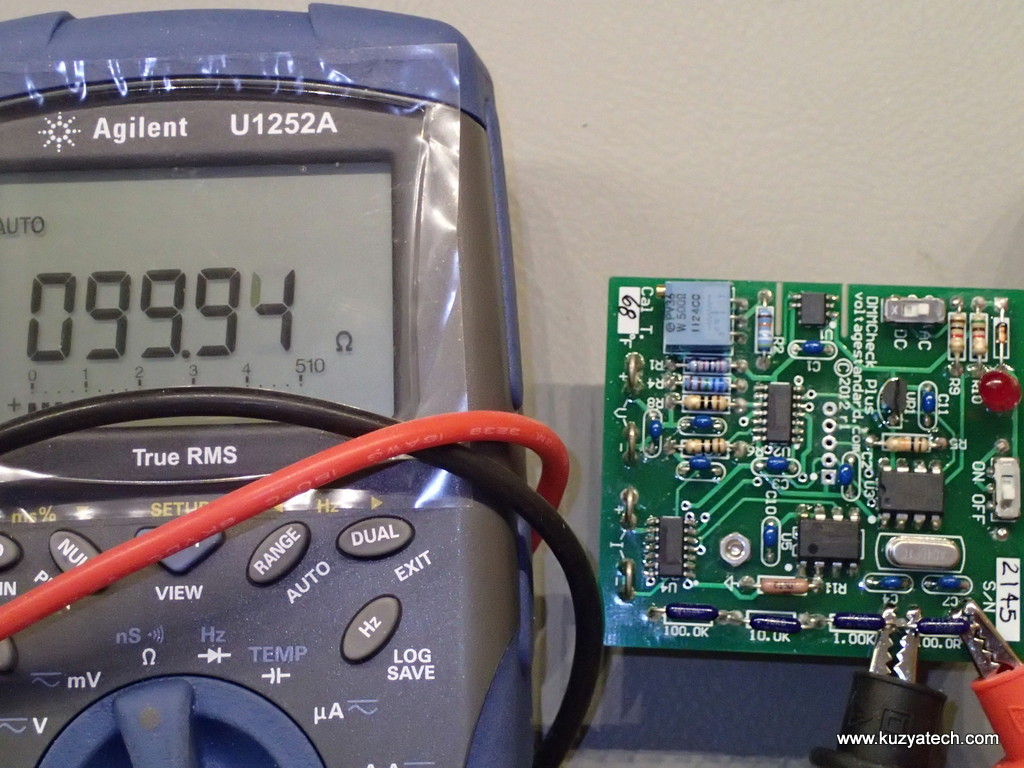
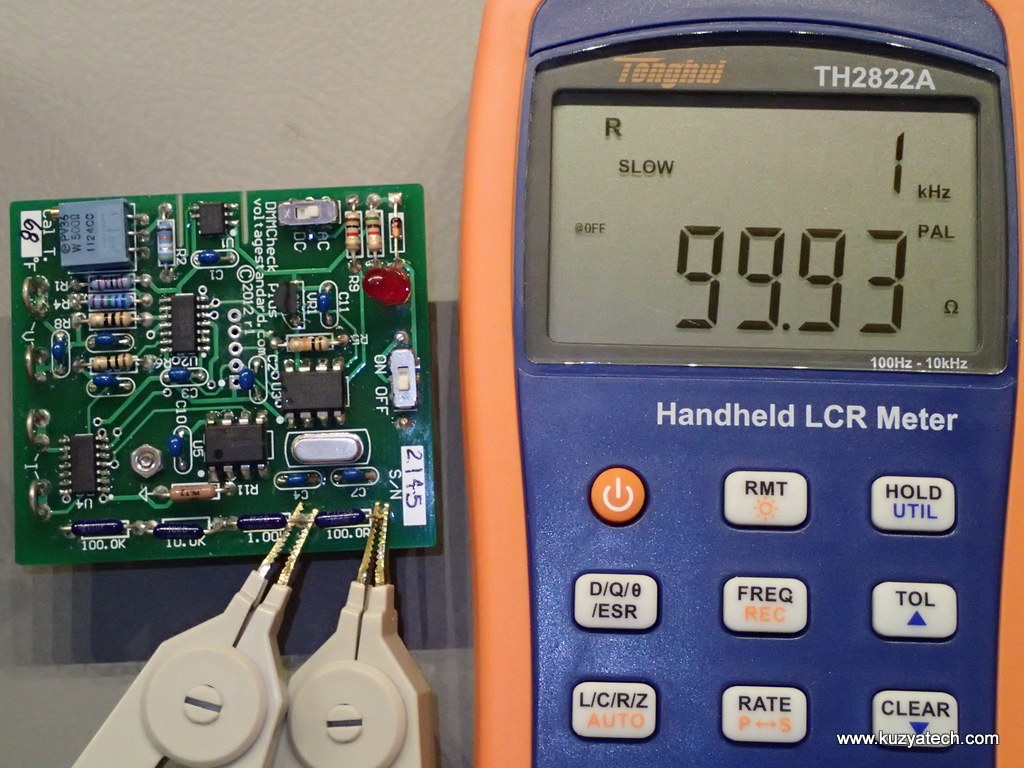
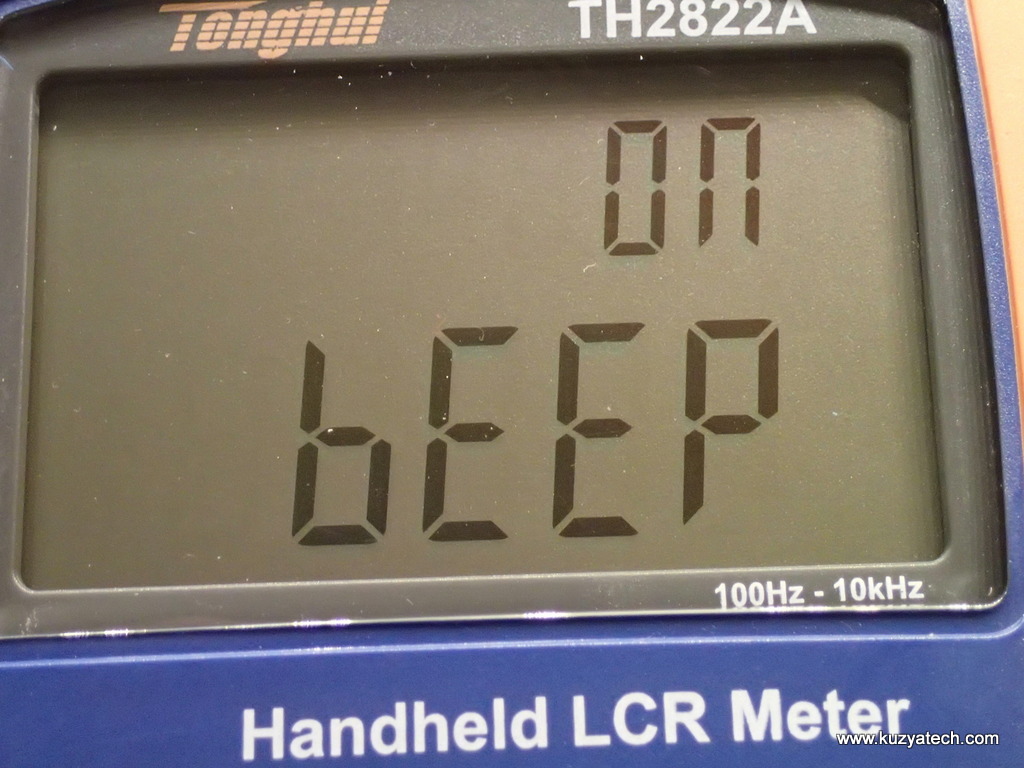
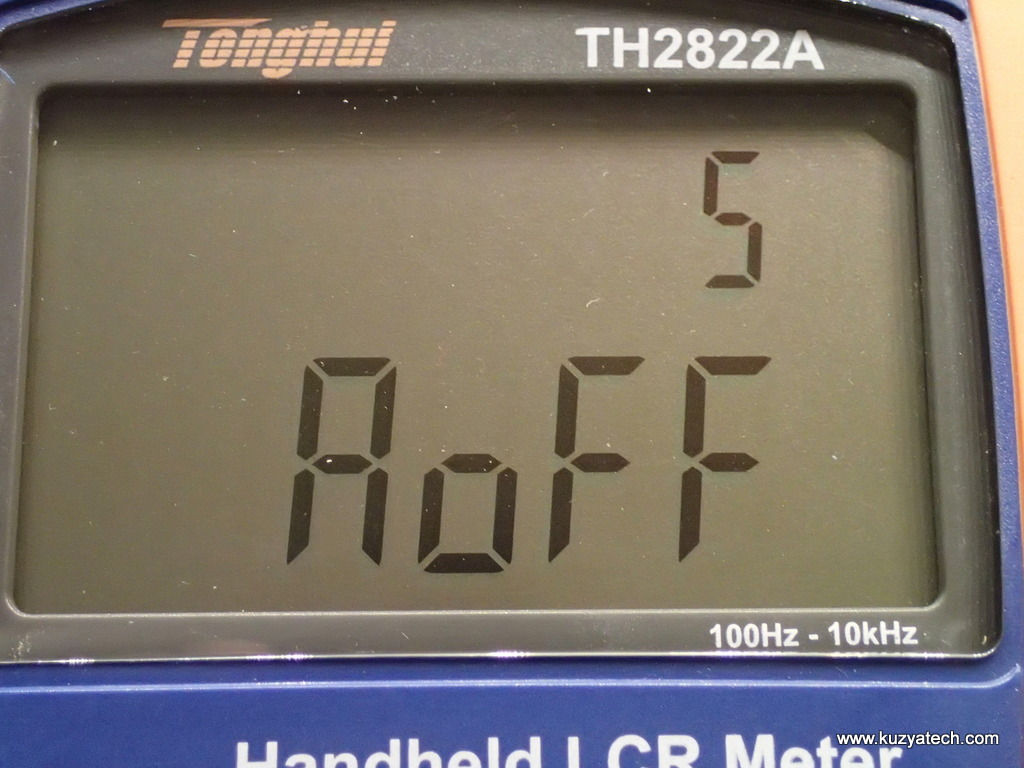

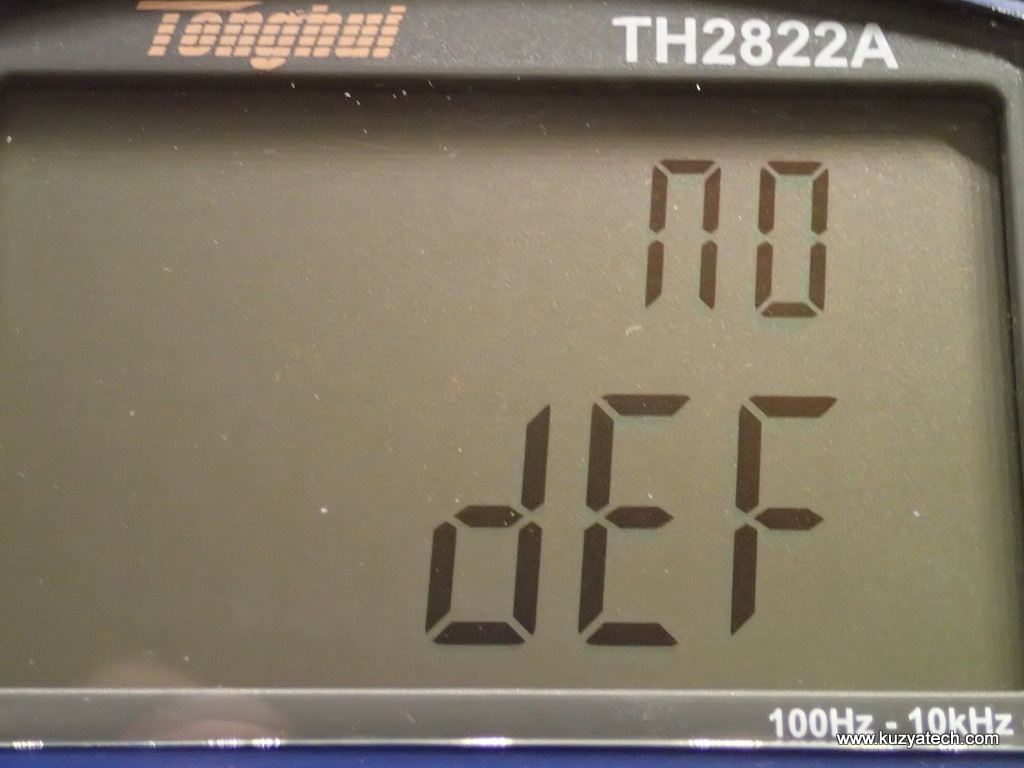
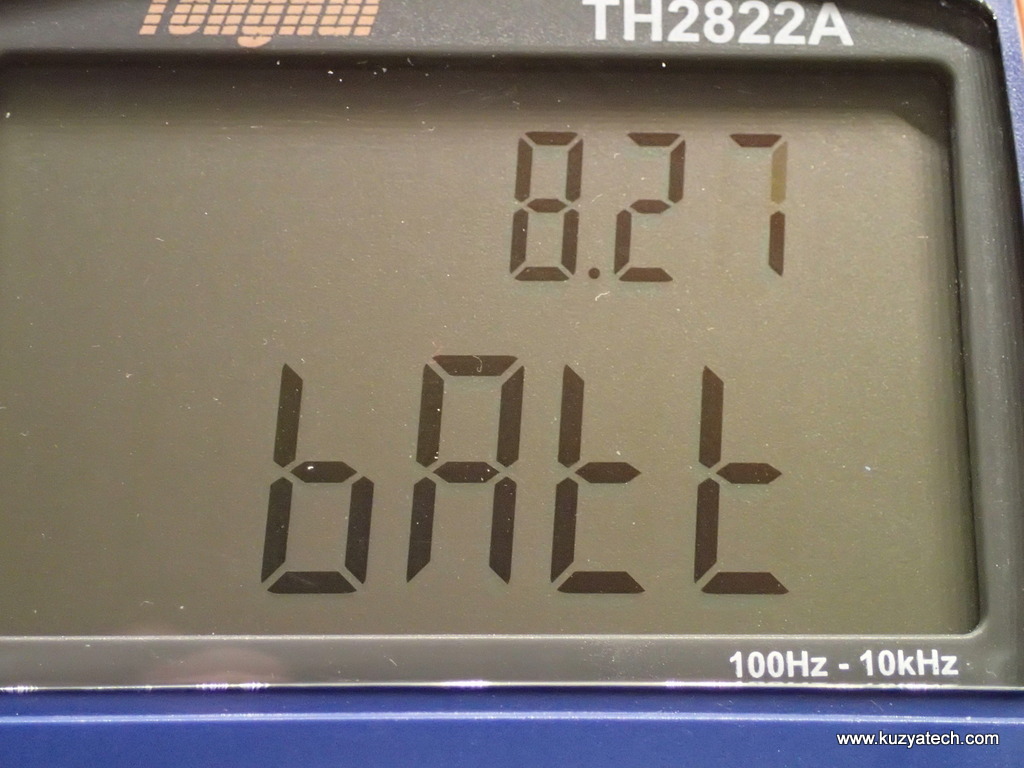
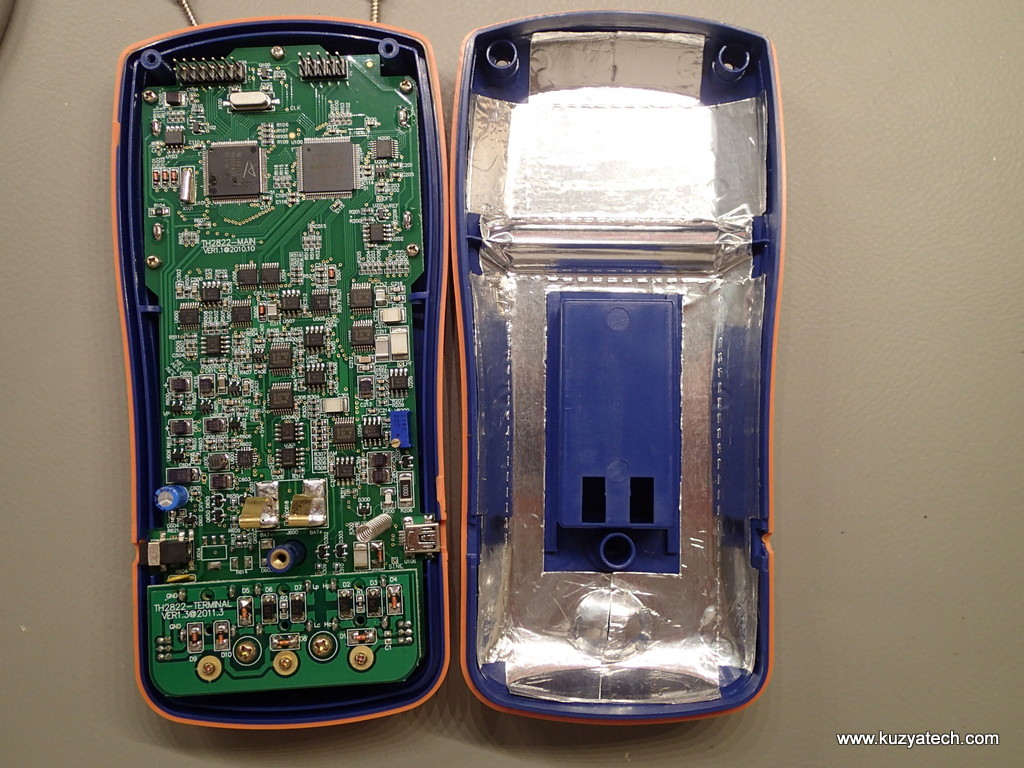
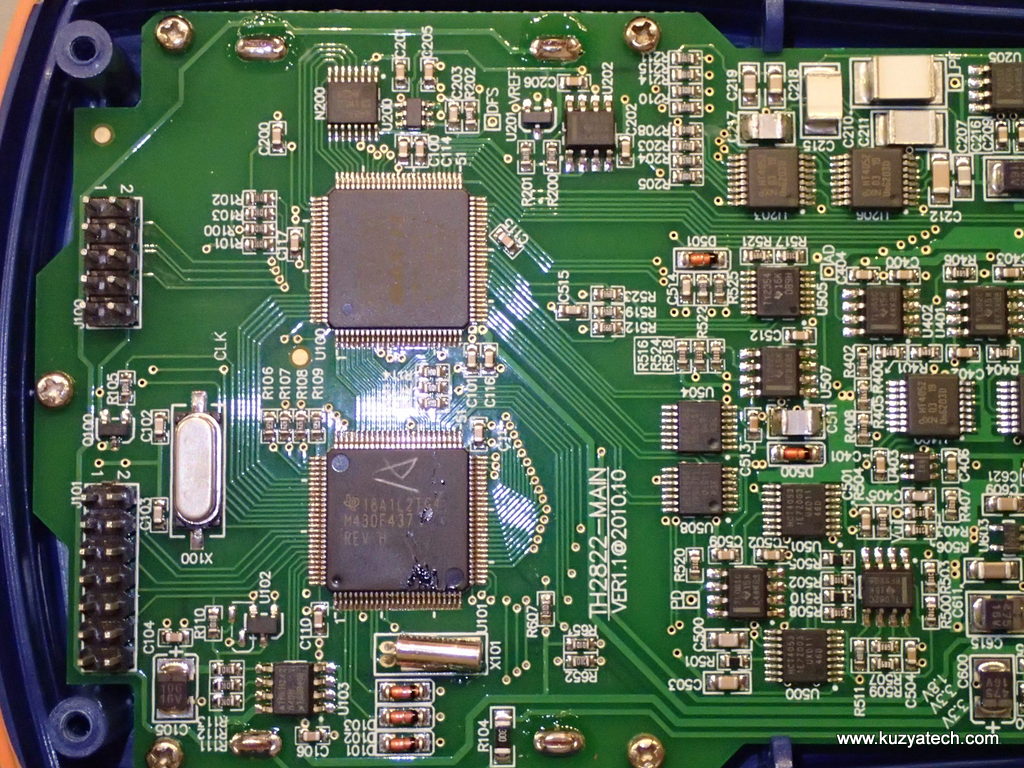
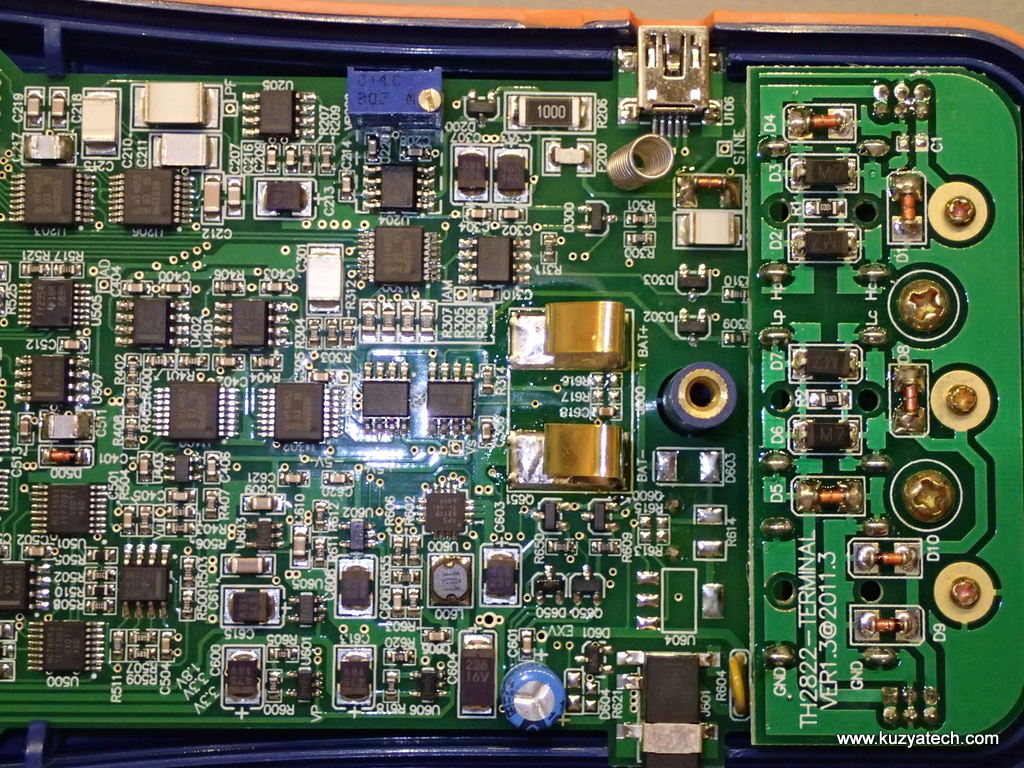
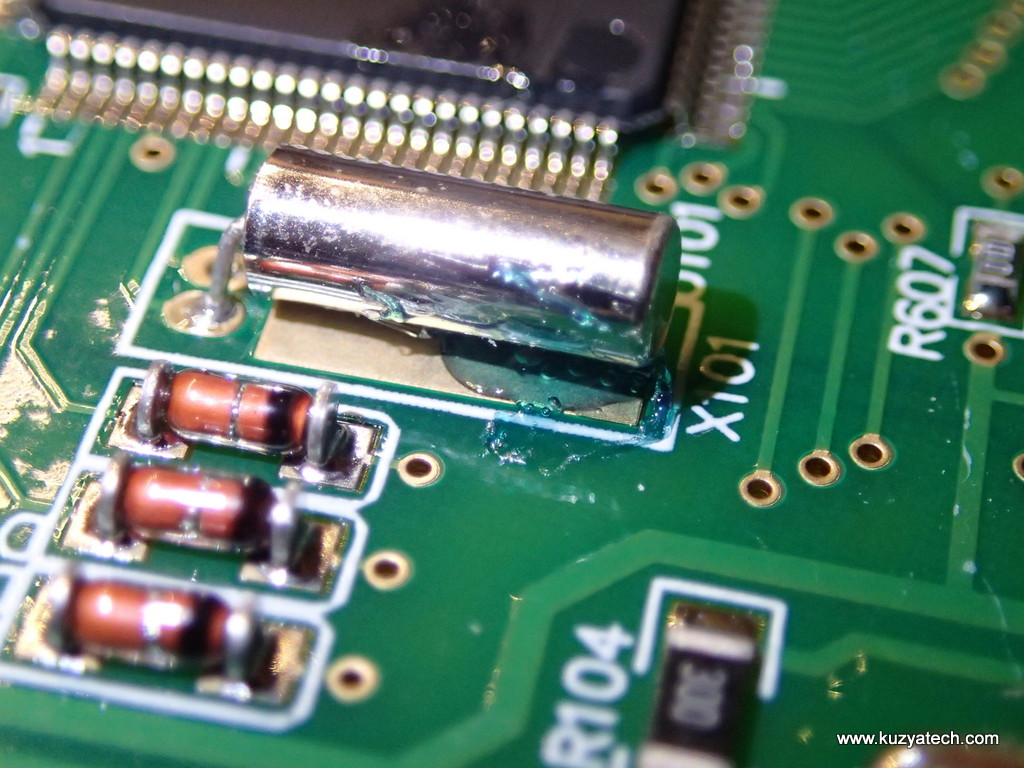
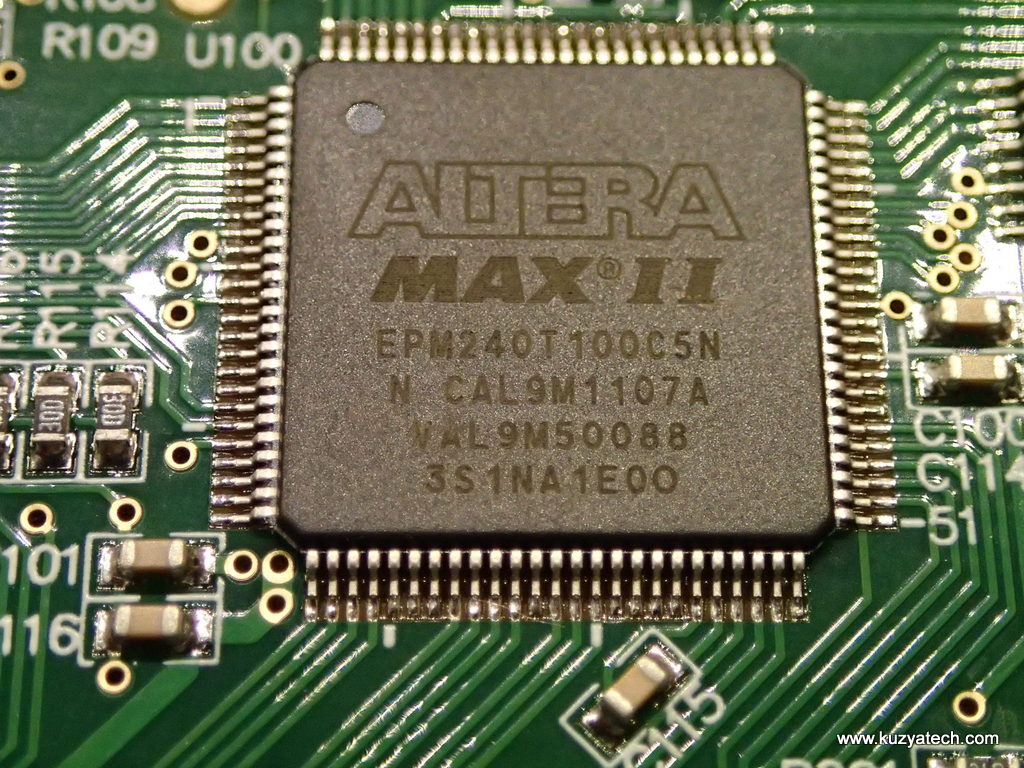
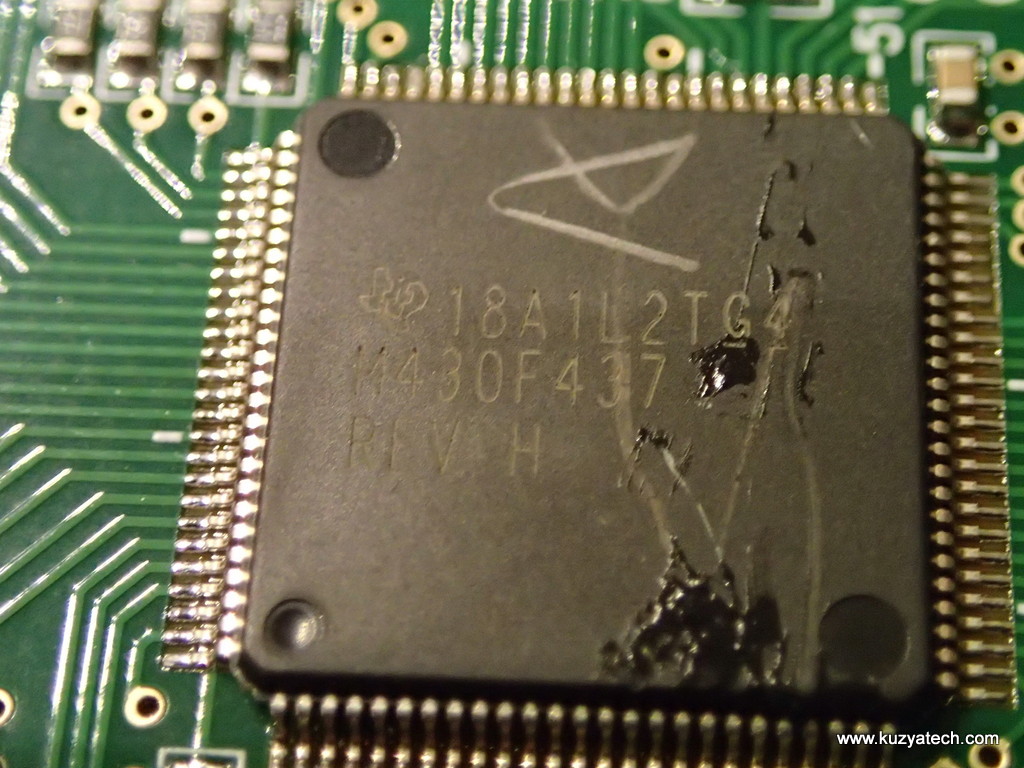
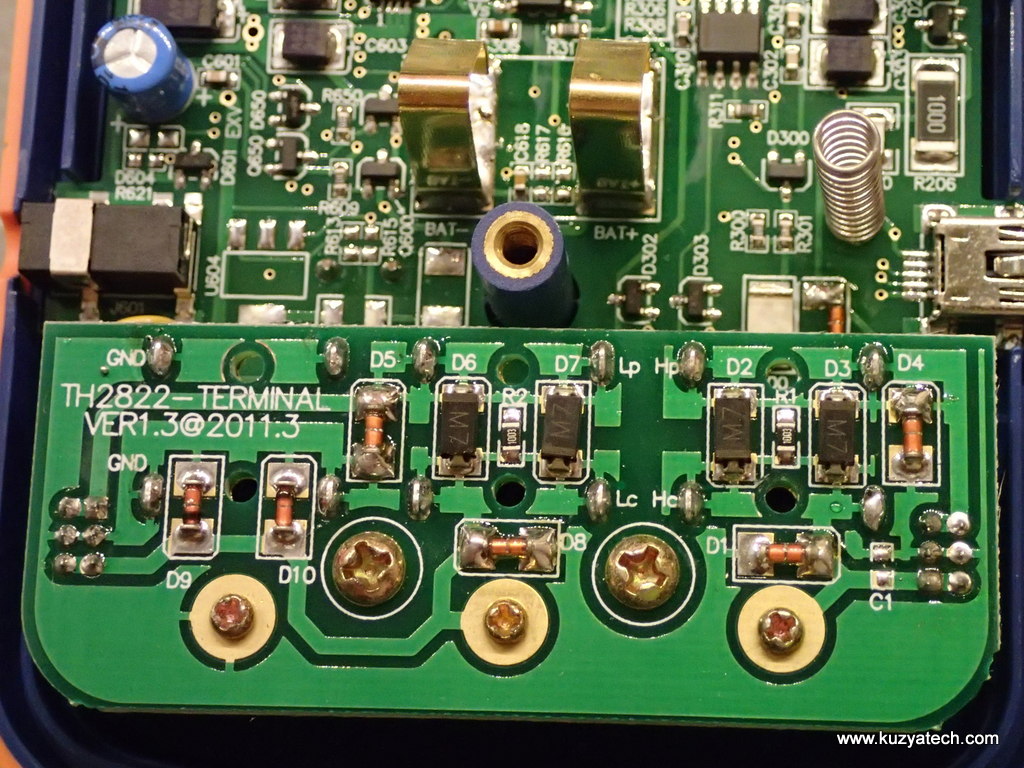
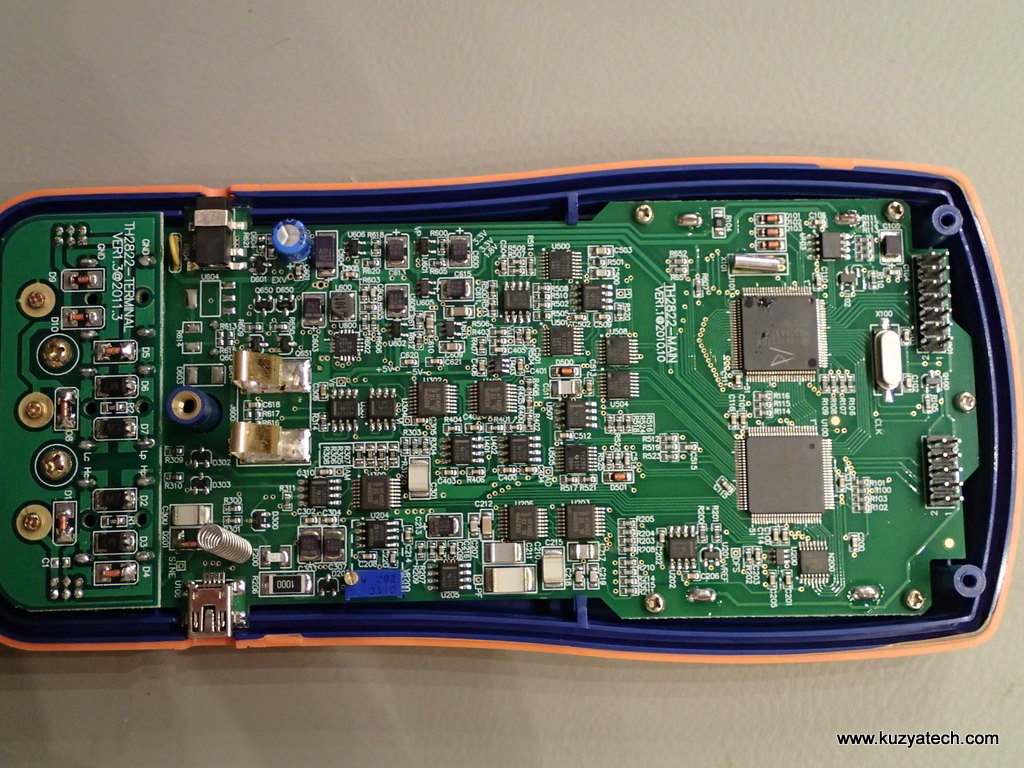

I own same LCR meter and I am happy with it, still I am looking for a populated board
with battery charging circuit, anyway very nice presentation, but I think you should better to choose proper frequency and proper mode on measurement conditions when compare the meter to the other one as it is explained in docs.
I guess this illustrates what a first time user would do, before realizing the importance of modes and frequency;) Having never used an LCR meter before, that caught me as well!
Thanks for posting the manual. Couldn’t find it except by registering on the tonghui site and then waiting for registration to be approved. Fail.
Before measuring any capacitor discharge it and use.
I bought a TH2822C device but my th2822-terminal chip became damage. How can I bought this one?